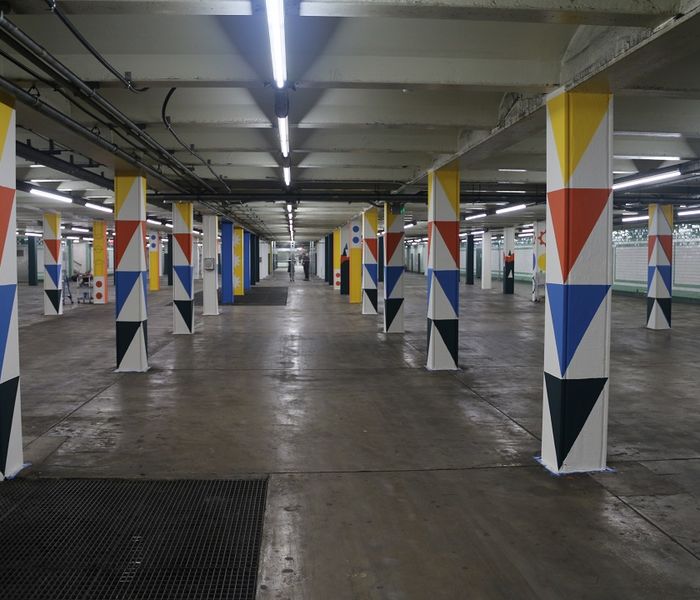
Color Me Back
September 22, 2020

Mural Arts Philadelphia and the City of Philadelphia Department of Behavioral Health and Intellectual disAbility Services announced Phase II of Color Me Back: A Same Day Work and Pay program. Color Me Back is an innovative program that combines participatory art-making and access to social services in a unique model offering individuals who are experiencing economic insecurity an opportunity to earn wages. Participants have the opportunity to connect, contribute, and engage with peer specialists who can link them with support services, including social and/or behavioral health services and potential opportunities for longer-term employment while working in the program. The project partners are SEPTA, First Step Staffing, Office of Homeless Services, and Scattergood Foundation, with lead financial support from Barra Foundation and Sheller Family Foundation.

Color Me Back at the South Broad Street SEPTA Concourse began in late July 2020 and is scheduled for completion in November 2020. This “next step” work opportunity is an evolution of the first phase of the Color Me Back project, where ten individuals who participated in Phase I will be randomly selected for four consecutive four-hour work days, during which they will receive a variety of art-making trainings, from priming and brush skills to installation. This longer engagement with participants will allow for deeper connections and increased skill-building. The participants will receive payments of $50 per day, for a total of $200 for the four days of work.
This new phase of Color Me Back will cover 200 columns in the SEPTA concourse along the Broad Street subway line, between City Hall and Walnut Street, with brightly-colored public art, designed by Philadelphia artist Lauren Cat West and painted by the participants in the program. West spent two months in weekly workshops with program participants developing ideas and symbols to be integrated into the design before the program had to be paused due to the COVID-19 pandemic. Now the project is starting up again, with an evolved model for participation, which takes into account necessary COVID-19 health and safety standards. The mural site and placement of columns also allows for natural spacing of participants to adhere to physical distancing policies.

Themes include a nod to the historic and iconic geometric tiles currently in the station; Philly row homes and an abstract highlight of the “community stoop” and welcoming architectural patterns; symbols with reference to the city’s parks, independence, folk art, and historical figures; abstract representations of some of Philadelphia’s iconic buildings; other artistic symbols; and symbols of nature.
Jane Golden, Executive Director of Mural Arts Philadelphia, said, “Mural Arts Philadelphia is pleased to continue our important partnership with and SEPTA to beautify our public transit areas while also having a profound impact on individuals experiencing economic insecurity. We know that public art and public health can work together to affect change and find that goal to be more important than ever today.”
Leslie S. Richards, SEPTA General Manager, said, “SEPTA works hard to enhance the travel experience of our customers and visitors, so it is truly exciting to partner with Mural Arts Philadelphia and the aspiring artists who continually reimagine what great public spaces, like the South Broad Street concourse, can suddenly become.”



